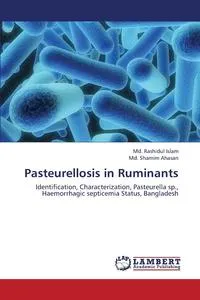Pasteurellosis in Ruminants
Автор: Islam MD Rashidul
Переплёт: Мягкая обложка
📓 Pasteurellosis or Hemorrhagic septicemia is an acute, fatal septicemic disease occurring in water buffaloes and cattle, but occasionally also in other domesticated and wild mammals. The prevalence of the disease has been well documented with predominant isolation of P. multocida in several countries of Asia, Middle East, southern Europe, central and East Africa. The disease is more common in buffaloes with a higher mortality rates in compare with other ruminants. Highest epidemics usually occur in the rainy season. Pasteurellosis has a major impact on the livestock industry in countries of Southeast Asia especially in Bangladesh where a severe economic loss has been recorded and is ranked as one of the most important contagious disease of cattle and buffaloes. The book is emphasized on identification, characterization of Pasteurella sp. isolated from ruminants (cattle and buffalo), highlights on an overall status of ruminant pasteurellosis in Bangladesh which will able to provide a clear guidelines to the researcher, professionals as well as policy maker in development of national and international guidelines for prevention and control of ruminant pasteurellosis.
Мнения
